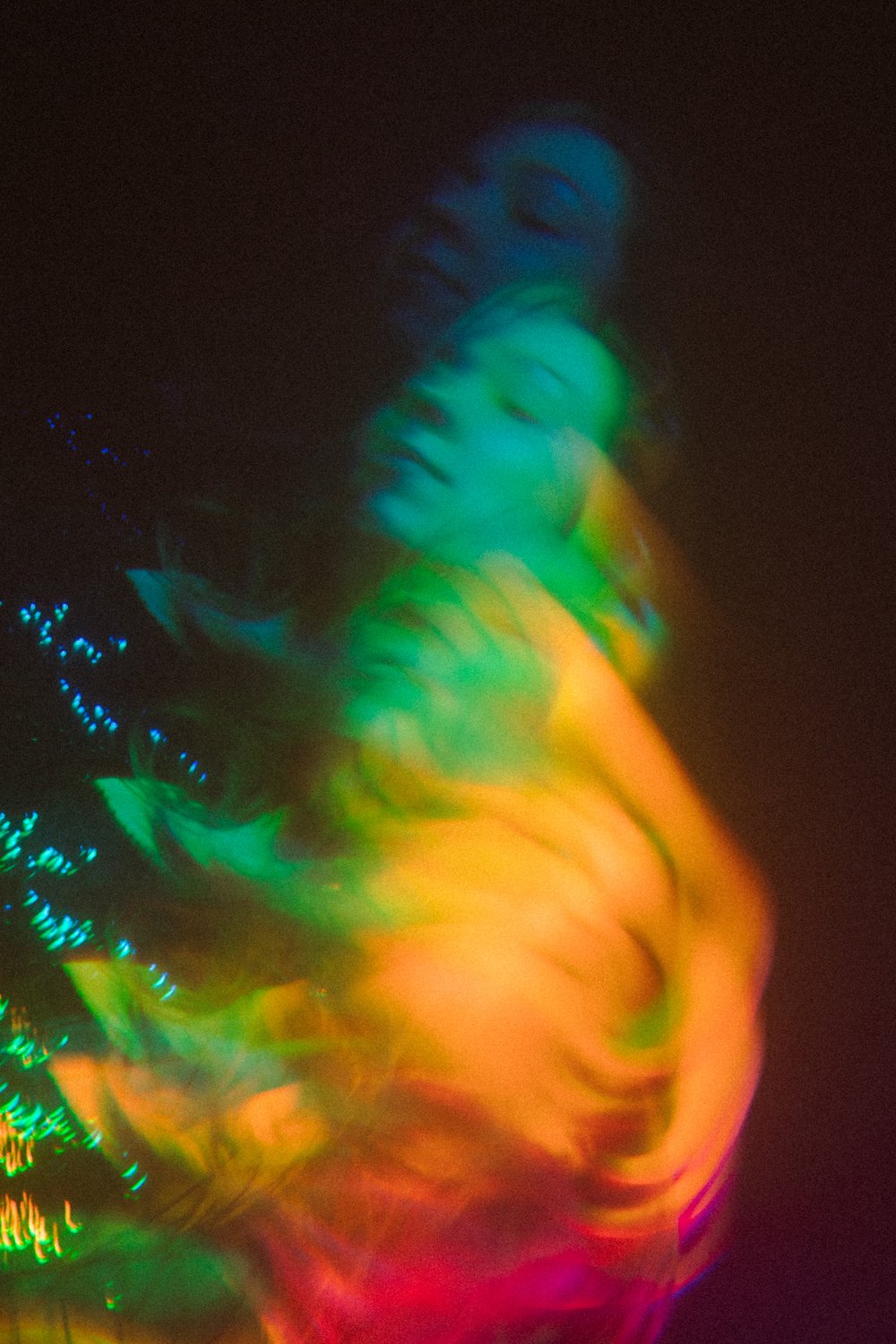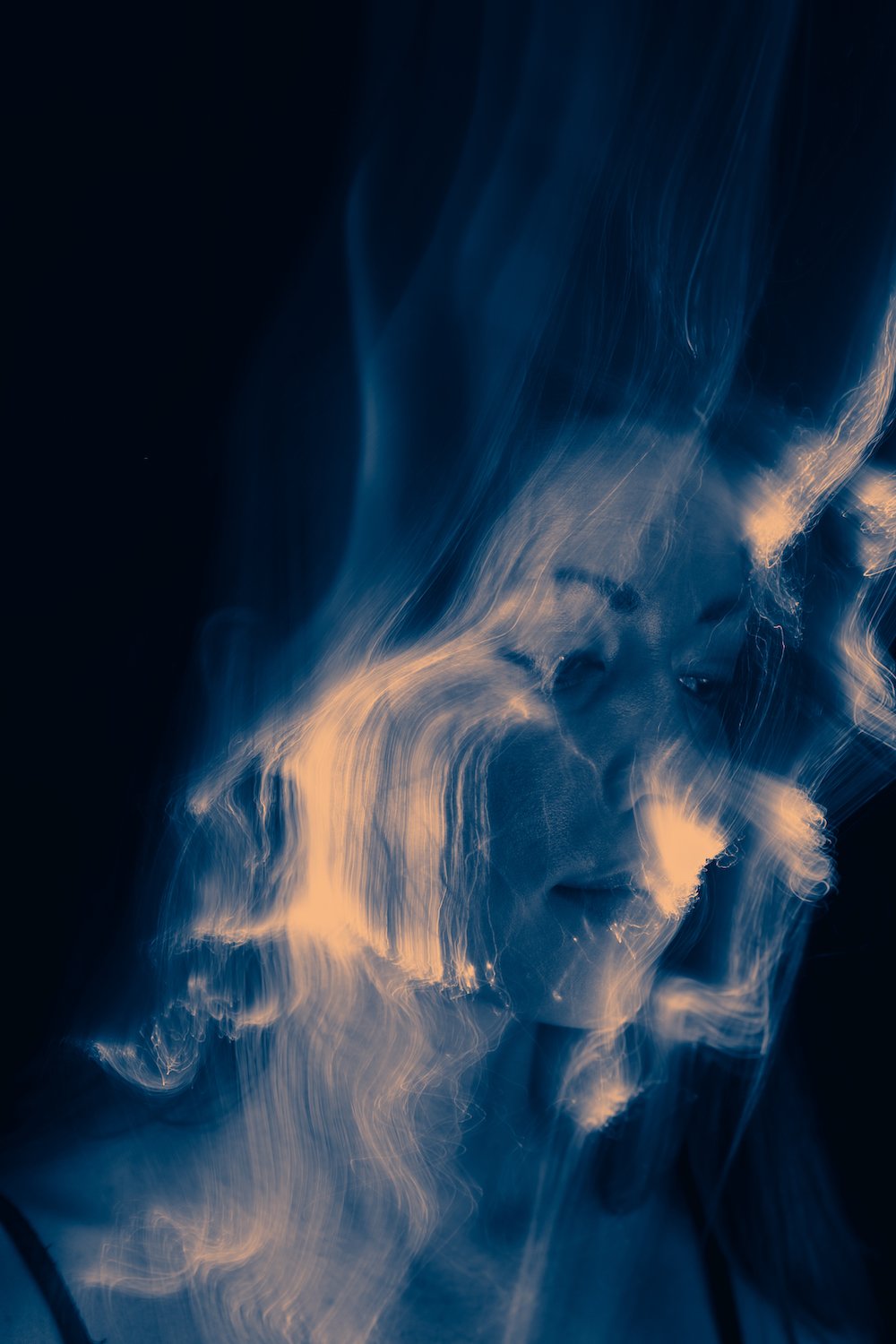Whenever I’m doing a personal shoot I try to make at least one small change to a tried-and-true technique in an effort to see how the resulting images differ from previous sessions. For example, let’s say I’m shooting long exposures in a darkened room while my subject is wrapped in strands of LED lights and moving around the room. Each image is different based on their movement, which creates unique light trails. In the following shoot I might have the subject and camera stationary as I swing the strand of LEDs around the room, thus framing the subject in light. Another session might involve me moving my camera while the subject and lights are unmoving. Each tweak of the formula creates dramatically different results and I frequently discover new techniques through these experiments.
Take this recent session as an example. Kayla, who is a super talented illustrator and designer, came by to sit for me as I explored using with a new prism that my dear friend Kristin gifted me. I set up two GVM 800D LED lights in a darkened room and set it to “party mode”, where the lights pulse through the prismatic spectrum. I used a fungus-filled lens that I bought off of ebay, which creates hazy, atmospheric images. I locked my camera down on a tripod and made half-second exposures while I moved the prism back and forth, in front of the lens. The half second exposure was a sweet spot as it was enough time to allow the lights to pulse through a full range of colors (any longer and they all blend together into white light; any shorter and you only see a couple of the colors), while also giving me enough time to move the prism across the front of the lens. As the prism moved and light changed, each color of Kayla had a moment to burn into a distinct image.
Doing effects in camera creates moments of surprise— elements that you may not think to incorporate. For example, if you were to simply try to create this effect in photoshop by changing the hue of a portrait and stacking a bunch of them together, the final shot would be made up of a bunch multi-colored, but otherwise identical images of Kayla. Images created with this technique are more nuanced in that each one is comprised of multiple, slightly different images of Kayla over that occured over the span of the half second exposure. As such, these straddle the line between portrait and video, where the passage of time is more of an element.
For the remainder of the shoot I played with some fiber optic brushes that I got from Light Painting Tools.
The BTS video below shows how fast the lights were changing, how close the prism was to my lens, and how quickly I moved the prism during the half-second exposures.








